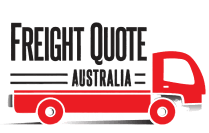If you’ve ever sent items with a transport company, you’ll understand that a major concern for people is making sure the goods arrive at the destination in the same condition that they left in. Packaging requirements can vary from one item to the next, so it is important to know how to ship big items and small ones, and which type of packaging is best suited for your needs. A courier simply collects and delivers the goods. It’s up to the sender to make sure it is packaged adequately.
The risks of not packaging goods adequately are quite obvious. In online retailing, it could be very costly to have made a sale to a customer only to have the poorly packaged goods damaged before they arrive. Or perhaps you needed to send materials urgently to a construction site, but because the goods were damaged the project was delayed. Hence the indirect cost of damaged goods can become quite expensive, with extra freight costs, replacement costs and time lost all adding up to far more than the cost of some suitable packaging materials.
Types of packaging
Satchels – these are commonly used to send very small and light goods such as spare parts and goods that have a small risk of getting damaged. They are most commonly used with local postal services.
Cartons – these are used to transport smaller goods, and are one of the most common forms of freight packaging. Online retailers will pack cartons with many small items, minimising the risk of the goods being lost, and making the delivery economical. To increase protection in a box, it is common to fill any empty spaces with polystyrene foam so the goods remain stable and don’t move around.
Pallets – When deciding how to ship big items it really comes down to what the items are. Pallets are widely used in many businesses to send large quantities of cartons and bulky goods. If you go to a local supermarket, for example Aldi, it is very common to see pallets packed with many boxes of food. Pallets are one of the most economical and efficient way to send goods. To minimise the risk of damage to pallets, they are often shrink wrapped with plastic, which holds all the boxes together on the pallet so they don’t move around during transit. To further increase efficiency in a warehouse, many companies have forklifts onsite to assist with loading and unloading pallets from trucks.
Crates – these are commonly used to transport irregularly shaped items, as well as oversized goods that don’t normally fit on a pallet. Most commonly made from wooden planks, transport crates enclose goods that could otherwise be easily prone to damage, such as machinery, barbecues, pitbikes, treadmills and other large electronic goods. It is also important for a crate to have forklift access, so it can be loaded easily onto a truck.
Strapping – this is used for sending bundles of goods, for example bundles of poles or PVC pipes. Strapping can be metal or plastic and is made into a tight band around the bundle, so they don’t become separated during transport. Bundles are sometimes strapped to pallets to allow for forklift loading and unloading.
Labelling your freight
Once you have selected the type of packaging you will use, it is then important to correctly label the goods. A label usually has the delivery address, and contact details, consignment number for tracking and the number of items in the delivery. It is very important to make sure the label is clear, and properly attached to the goods to minimise the risk of both it and the consignment going astray.

